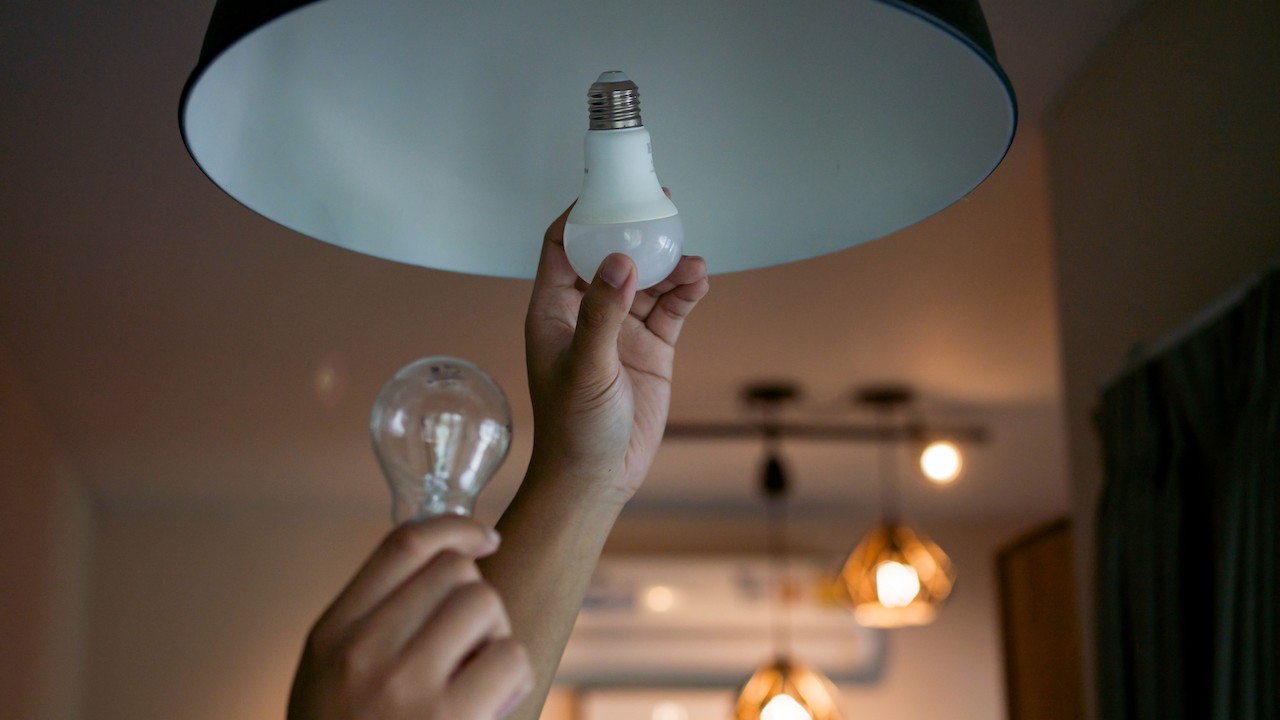

What's your take on light bulbs and energy efficiency?
Light bulbs and energy efficiency are closely interconnected, as the choice of light bulb technology directly impacts energy consumption and environmental sustainability. Traditionally, incandescent bulbs have been widely used, but they are highly inefficient, converting a significant portion of electrical energy into heat rather than light. In contrast, energy-efficient light bulbs, such as compact fluorescent lamps (CFLs) and light-emitting diodes (LEDs), offer substantial energy savings and longer lifespans.
CFLs are a significant improvement over incandescent bulbs. They use around 75% less energy and can last up to 10 times longer. For example, a 60-watt incandescent bulb can be replaced by a 14-watt CFL, producing similar light output. This energy efficiency translates into reduced electricity bills and lower greenhouse gas emissions. However, CFLs contain a small amount of mercury, which requires proper disposal to prevent environmental contamination.
LEDs are the most energy-efficient lighting technology available today. They use up to 80% less energy than incandescent bulbs and have a lifespan of around 25,000 to 50,000 hours, significantly longer than CFLs. LEDs also offer flexibility in terms of color temperature and dimming capabilities. Although LEDs have a higher upfront cost, their long lifespan and energy savings make them cost-effective over time.
The transition to energy-efficient lighting has gained momentum due to government regulations and consumer awareness. Many countries have phased out or restricted the use of incandescent bulbs, promoting the adoption of CFLs and LEDs. For instance, the European Union banned incandescent bulbs in 2012, and the United States introduced efficiency standards that effectively phased out most incandescent bulbs by 2014.
The environmental benefits of energy-efficient lighting are substantial. According to the U.S. Department of Energy, replacing traditional incandescent bulbs with energy-efficient alternatives could save up to 75 billion kWh of electricity annually by 2030, equivalent to the energy consumption of 6.5 million homes. This translates into reduced carbon dioxide emissions, improved air quality, and conservation of natural resources.
Moreover, energy-efficient lighting has economic advantages beyond energy savings. It creates jobs in manufacturing, installation, and maintenance, stimulating local economies. A study by the International Energy Agency estimated that a global transition to energy-efficient lighting could generate over 2 million jobs by 2020.
In conclusion, light bulbs and energy efficiency are intertwined, and the adoption of energy-efficient technologies like CFLs and LEDs is crucial for sustainable lighting solutions. These alternatives offer significant energy savings, longer lifespans, and reduced environmental impact. Governments, organizations, and individuals should continue to promote and invest in energy-efficient lighting to achieve a more sustainable future.
Related Posts
© 2025 Invastor. All Rights Reserved

User Comments
Maleah Fisher
2 years ago
It not worth running incandescent especially in the summer.
Levi Perry
2 years ago
I think lighting is definately going in the direction of LEDs. Incandescents are just burning up the electricity (great for an easy-bake oven, not so great for area lighting). I think CFLs are a transitional technology that filled the gap between incandescent and mass market white LEDs. There is also halogen in the mix, which is much closer to incandescent, but a somewhat more efficient and longer lasting (but way hotter).
Joyce Coleman
2 years ago
Using those LED replacement bulbs, you are buying a transformer for each bulb. It's the transformer that generates the heat, not the LED itself. An efficient LED system install will use a single transformer and the wiring would all be 12v. It's certainly not the easiest way to go, but if you're doing a new installation, the correct way to do it. After that you can add LED for less than the price of an incandescent bulb.
Jack Trans
2 years ago
Burn out faster, yes, use more energy than an incandescent, nope. If you're referring to the current spike that you might see when adding an inductive load to a circuit (turning on the cfl), yes, it might conceivably be higher than for the purely resistive load of an incandescent, but a brief spike in power consumption does not equal a higher energy expenditure.
Wyatt Tran
2 years ago
Cf bulbs are only good if you keep them on longer, in places like bathrooms where you turn them on do you business then turn them off when you leave, they'll burn out faster and use up more energy than a incandescent. But in places where you might have them on for several hours at a time you will start to see them use less energy. So it's not just in your head about them seeming to blow out faster. I'd cite an example but I'm on my phone ATM.
Joseph Ellis
2 years ago
CF lights seem to blow much faster than rated hours indicate and I would not recommend them. LED is the way to go, they use a tenth of the energy of incandescent, give great light and are getting cheaper all the time. All of our lighting now is efficient, and as the CF blow, we replace them with LED's. The power use over time graph showed our power use dropped by 25% (No electric heating, just lights and appliances.) We use cheap Ebay packs as we don't need to use dimmers and they are quite adequate. You will need to do some homework to get the best LED's if you need dimmable globes. In 3 years I have never had an LED light blow. One fell apart and still worked, I fixed it with a drop of glue. Over the same period I lost 4 or 5 CF globes.